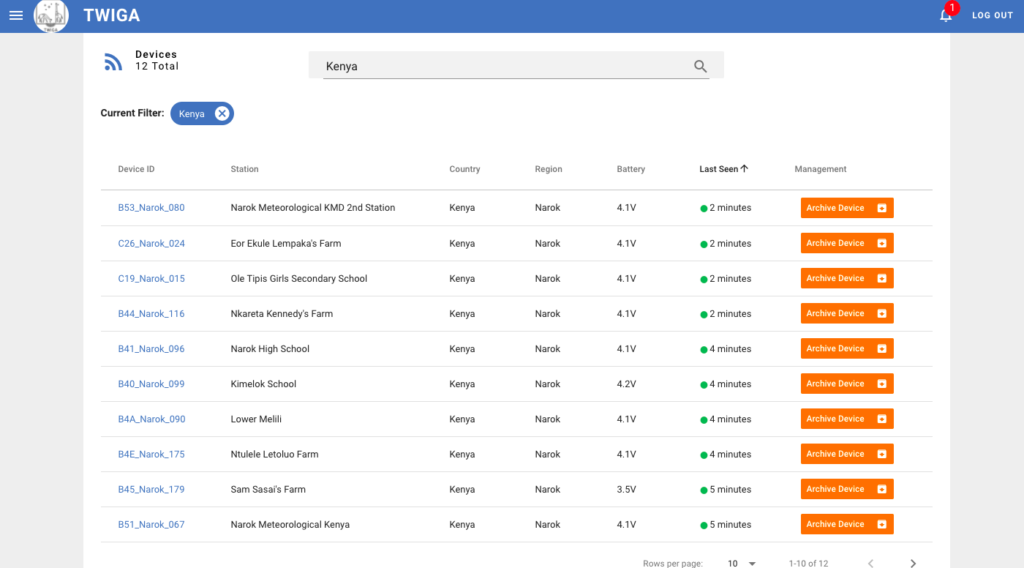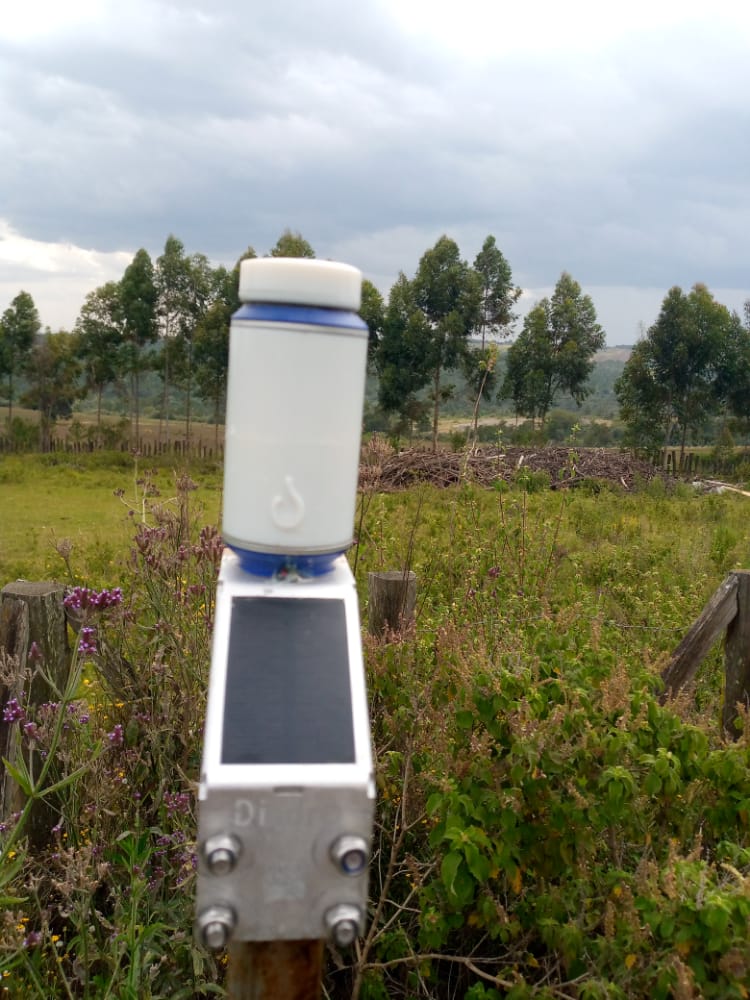My last blog was on how we developed Kenya’s disdro network, how the sensors work and how we transmit its data. The network with the new generation of the disdro sensors has now been running continuously for 6 months. We are now shifting focus on keeping the network active and, more importantly, share and display the data.
We have been developing TWIGA’s information platform for sometimes now and recently we linked the disdro data to the TWIGA platform; we now have our disdros sending data to our gateways which then uploads it to the TWIGA platform. A team of data scientists at Strathmore University developed a web portal and a mobile app that shows the data. At the moment we are using the platforms for network maintenance. However since we also want to make data available to a wide range of users, a team is working on improving the features on weather predictions, wetness information among others.

Disdro Network in Narok visualised on the TWIGA portal. 
Disdro Network in Narok visualised on the TWIGA portal.
Running the disdro network has not been without challenges. For example, birds would poop on the disdro’s solar panel – see picture below. As a result, the charging rate lowers, then the batteries drain. Having such issues in the field helps us to innovate more until we have a “perfect” sensor. The OPenS lab at the Kumasi Business Incubator (KBI) of the Kwame Nkrumah University of Science and Technology (KNUST), a project partner supported by the Delft University of Technology (TU Delft) and Oregon State University (OSU) will be producing 3D-printed bird spikes that will help resolve this challenge.

Before cleaning Disdro 
After Cleaning Disdro
Keeping disdro network running requires a standby maintenance team to respond to issues that can come up. In both Ghana and Kenya, we have teams that run the network to keep it active and the data flowing. We check it several times over the week and where there is a problem the team resolves it promptly.
RELATED TWIGA SERVICE: INTERNATIONAL WATER CONTROL ROOM

